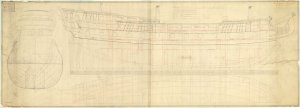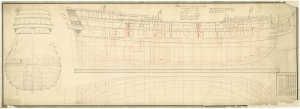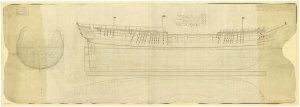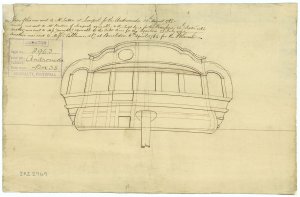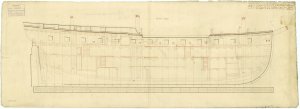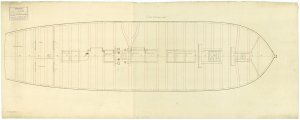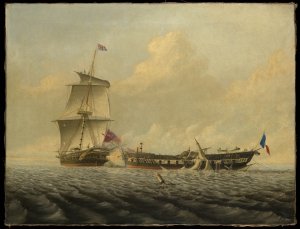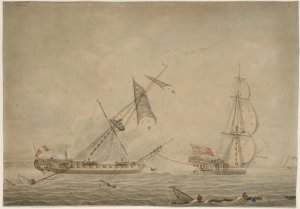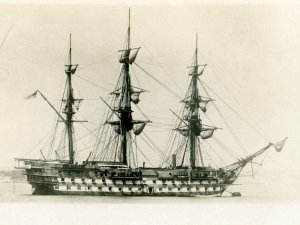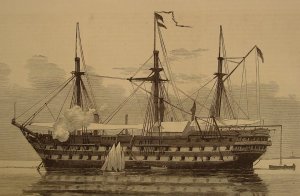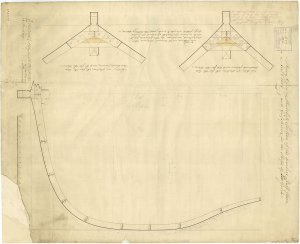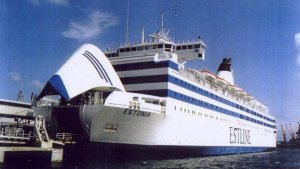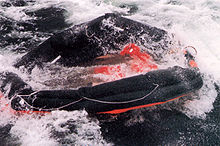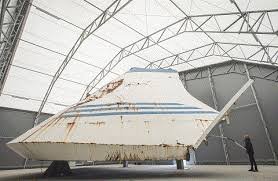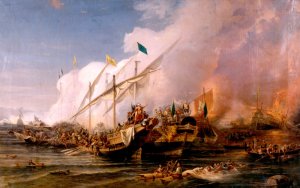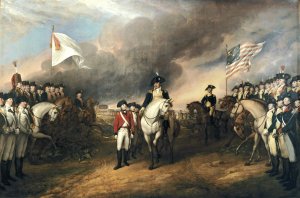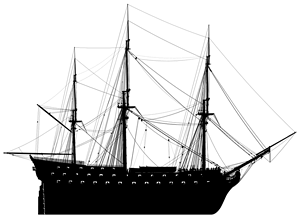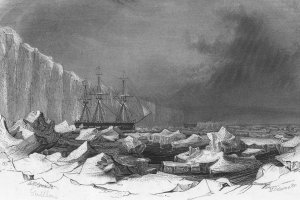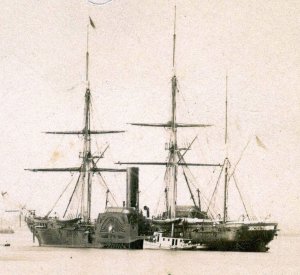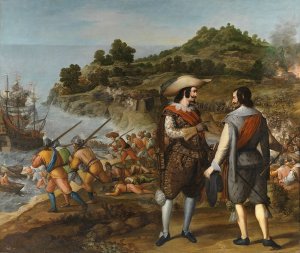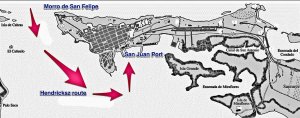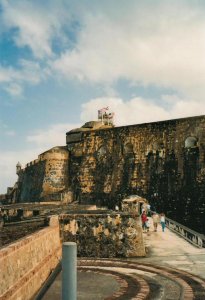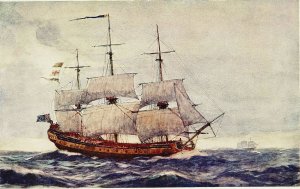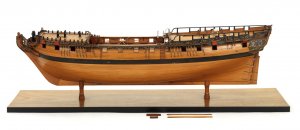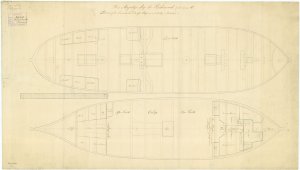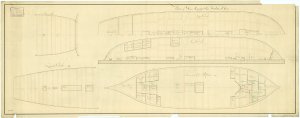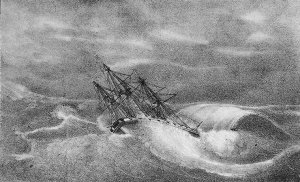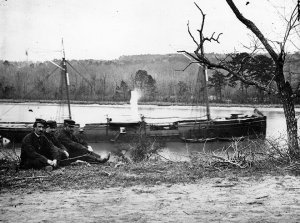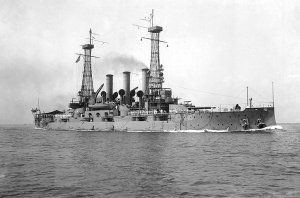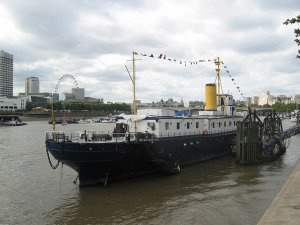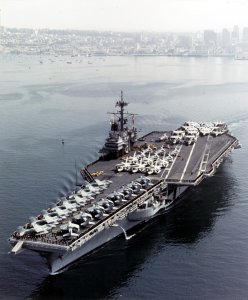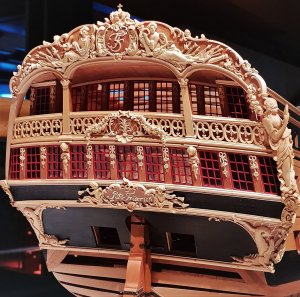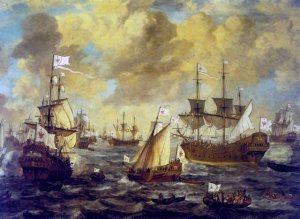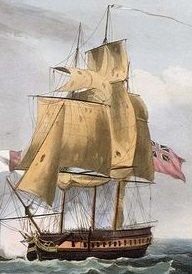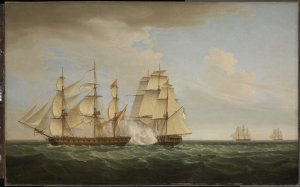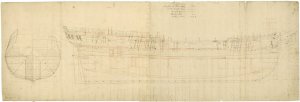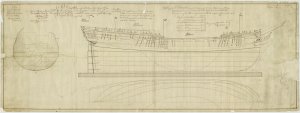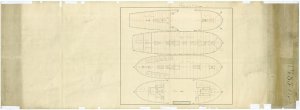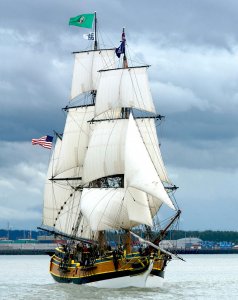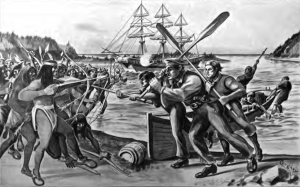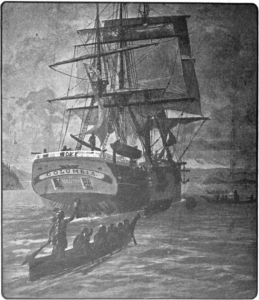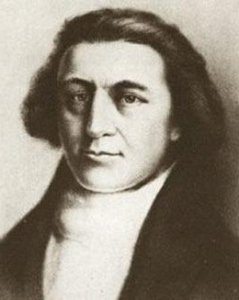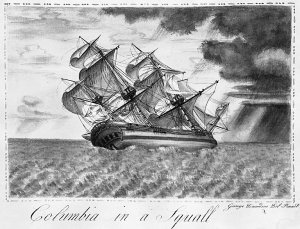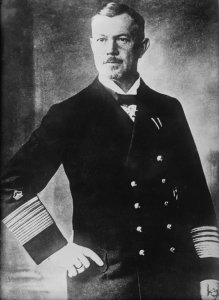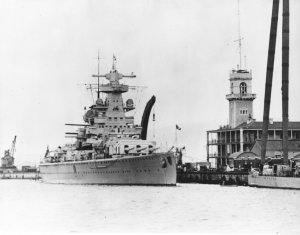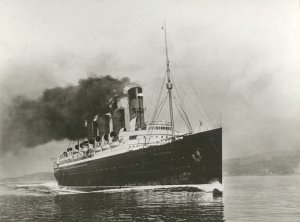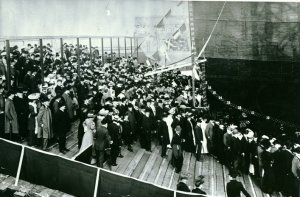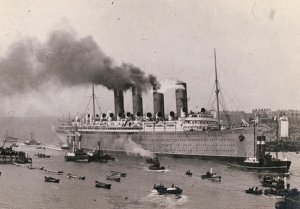Today in Naval History - Naval / Maritime Events in History
29 September 1758 – Birth of Horatio Nelson, 1st Viscount Nelson, English admiral (d. 1805)
Vice Admiral
Horatio Nelson, 1st Viscount Nelson, 1st Duke of Bronté, KB (29 September 1758 – 21 October 1805) was a British flag officer in the Royal Navy. He was noted for his inspirational leadership, grasp of strategy, and unconventional tactics, which together resulted in a number of decisive British naval victories, particularly during the Napoleonic Wars. He was wounded several times in combat, losing the sight in one eye in Corsica and most of one arm in the unsuccessful attempt to conquer Santa Cruz de Tenerife. He was shot and killed during his final victory at the Battle of Trafalgar near the port city of Cádiz in 1805.
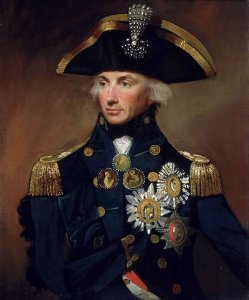
Vice Admiral Horatio Lord Nelson, by
Lemuel Francis Abbott
Nelson was born into a moderately prosperous
Norfolk family and joined the navy through the influence of his uncle,
Maurice Suckling, a high-ranking naval officer himself. He rose rapidly through the ranks and served with leading naval commanders of the period before obtaining his own command in 1778. He developed a reputation in the service through his personal valour and firm grasp of tactics but suffered periods of illness and unemployment after the end of the American War of Independence. The outbreak of the French Revolutionary Wars allowed Nelson to return to service, where he was particularly active in the
Mediterranean. He fought in several minor engagements off Toulon and was important in the capture of Corsica and subsequent diplomatic duties with the Italian states. In 1797, he distinguished himself while in command of HMS
Captain at the Battle of Cape St Vincent.
Shortly after the battle, Nelson took part in the Battle of Santa Cruz de Tenerife, where his attack was defeated and he was badly wounded, losing his right arm, and was forced to return to England to recuperate. The following year, he won a decisive victory over the French at the Battle of the Nile and remained in the Mediterranean to support the
Kingdom of Naples against a French invasion. In 1801, he was dispatched to the Baltic and won another victory, this time over the Danes at the Battle of Copenhagen. He subsequently commanded the blockade of the French and Spanish fleets at Toulon and, after their escape, chased them to the
West Indies and back but failed to bring them to battle. After a brief return to England, he took over the Cádiz blockade in 1805. On 21 October 1805, the Franco-Spanish fleet came out of port, and Nelson's fleet engaged them at the
Battle of Trafalgar. The battle was Britain's greatest naval victory, but during the action, Nelson, aboard HMS
Victory, was fatally wounded by a French sharpshooter. His body was brought back to England where he was accorded a
state funeral.
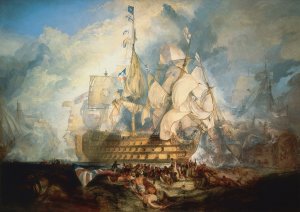 The Battle of Trafalgar
The Battle of Trafalgar by
J. M. W. Turner (oil on canvas, 1822–1824) shows the last three letters of the signal, "
England expects that every man will do his duty" flying from
Victory
Nelson's death at Trafalgar secured his position as one of Britain's most heroic figures. The significance of the victory and his death during the battle led to his signal, "
England expects that every man will do his duty", being regularly quoted, paraphrased and referenced up to the modern day. Numerous monuments, including
Nelson's Column in
Trafalgar Square, London, and the
Nelson Monument in
Edinburgh, have been created in his memory and his legacy remains highly influential.
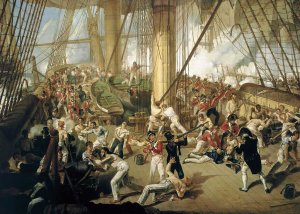
Nelson is shot on the
quarterdeck, painted by
Denis Dighton, c. 1825
 The Death of Nelson
The Death of Nelson by
Daniel Maclise (Houses of Parliament, London)
Early life

Captain
Maurice Suckling
Horatio Nelson was born on 29 September 1758 in a rectory in Burnham Thorpe,
Norfolk, England, the sixth of eleven children of the Reverend
Edmund Nelson and his wife Catherine Suckling. He was named after his godfather Horatio Walpole (1723–1809) then 2nd Baron Walpole, of Wolterton. His mother, who died on 26 December 1767, when he was nine years old, was a great-niece of Robert Walpole, 1st Earl of Orford, the
de facto first Prime Minister of Great Britain. She lived in the village of Barsham, Suffolk, and married the Reverend Edmund Nelson at Beccles church, Suffolk, in 1749. Nelson's aunt, Alice Nelson was the wife of Reverend Robert Rolfe, Rector of Hilborough, Norfolk and grandmother of Sir Robert Monsey Rolfe. Rolfe twice served as Lord High Chancellor of Great Britain.
Nelson attended Paston Grammar School, North Walsham, until he was 12 years old, and also attended King Edward VI’s Grammar School in Norwich. His naval career began on 1 January 1771, when he reported to the third-rate HMS
Raisonnable as an ordinary seaman and coxswain under his maternal uncle, Captain Maurice Suckling, who commanded the vessel. Shortly after reporting aboard, Nelson was appointed a midshipman and began officer training. Early in his service, Nelson discovered that he suffered from
seasickness, a chronic complaint that dogged him for the rest of his life.
Early naval career
HMS
Raisonnable had been commissioned during a period of tension with Spain, but when this passed, Suckling was transferred to the
Nore guardship HMS
Triumph and Nelson was dispatched to serve aboard the West Indiamen
Mary Ann of the merchant shipping firm of Hibbert, Purrier and Horton, in order to gain experience at sea; he sailed from Medway, Kent, on 25 July 1771 sailing to Jamaica and Tobago, returning to Plymouth on 7 July 1772. He twice crossed the Atlantic, before returning to serve under his uncle as the commander of Suckling's longboat, which carried men and dispatches to and from the shore. Nelson then learned of a planned expedition under the command of Constantine Phipps, intended to survey a passage in the Arctic by which it was hoped that India could be reached: the fabled North-East Passage. At his nephew's request, Suckling arranged for Nelson to join the expedition as coxswain to Commander Lutwidge aboard the converted bomb vessel HMS
Carcass. The expedition reached within ten degrees of the
North Pole, but, unable to find a way through the dense ice floes, was forced to turn back. By 1800 Lutwidge began to circulate a story that while the ship had been trapped in the ice, Nelson had seen and pursued a
polar bear, before being ordered to return to the ship. Lutwidge's later version, in 1809, reported that Nelson and a companion had given chase to the bear, but on being questioned why, replied that "I wished, Sir, to get the skin for my father."
Nelson briefly returned to
Triumph after the expedition's return to Britain in September 1773. Suckling then arranged for his transfer to
HMS Seahorse, one of two ships about to sail for the
East Indies.
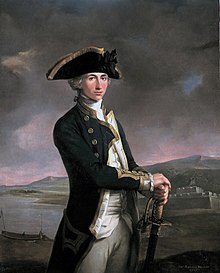
Captain Horatio Nelson, painted by John Francis Rigaud in 1781, with Fort San Juan—the scene of his most notable achievement to date—in the background. The painting itself was begun and nearly finished prior to the battle, when Nelson held the rank of lieutenant; when Nelson returned, the artist added the new captain's gold-braided sleeves.
Nelson sailed for the East Indies on 19 November 1773 and arrived at the British outpost at
Madras on 25 May 1774. Nelson and
Seahorse spent the rest of the year cruising off the coast and escorting merchantmen. With the outbreak of the
First Anglo-Maratha War, the British fleet operated in support of the
East India Company and in early 1775
Seahorse was dispatched to carry a cargo of the company's money to Bombay. On 19 February, two of Hyder Ali's
ketches attacked
Seahorse, which drove them off after a brief exchange of fire. This was Nelson's first experience of battle. The rest of the year he spent escorting convoys, during which he continued to develop his navigation and ship handling skills. In early 1776 Nelson contracted malaria and became seriously ill. He was discharged from
Seahorse on 14 March and returned to England aboard
HMS Dolphin. Nelson spent the six-month voyage recuperating and had almost recovered by the time he arrived in Britain in September 1776. His patron, Suckling, had risen to the post of Comptroller of the Navy in 1775, and used his influence to help Nelson gain further promotion. Nelson was appointed acting lieutenant aboard HMS
Worcester, which was about to sail to Gibraltar.
Worcester, under the command of Captain Mark Robinson, sailed as a convoy escort on 3 December and returned with another convoy in April 1777. Nelson then travelled to London to take his lieutenant's examination on 9 April; his examining board consisted of Captains
John Campbell, Abraham North, and his uncle, Maurice Suckling. Nelson passed, and the next day received his commission and an appointment to HMS
Lowestoffe, which was preparing to sail to
Jamaica under Captain
William Locker. She sailed on 16 May, arrived on 19 July, and after reprovisioning, carried out several cruises in Caribbean waters. After the outbreak of the
American War of Independence Lowestoffe took several prizes, one of which was taken into Navy service as the tender
Little Lucy. Nelson asked for and was given command of her, and took her on two cruises of his own. As well as giving him his first taste of command, it gave Nelson the opportunity to explore his fledgling interest in science. During his first cruise, Nelson led an expeditionary party to the Caicos Islands, where he made detailed notes of the wildlife and in particular a bird – now believed to be the white-necked jacobin. Locker, impressed by Nelson's abilities, recommended him to the new commander-in-chief at Jamaica,
Sir Peter Parker. Parker duly took Nelson onto his flagship, HMS
Bristol. The entry of the French into the war, in support of the Americans, meant further targets for Parker's fleet and it took many prizes towards the end of 1778, which brought Nelson an estimated £400 in prize money. Parker appointed him as
Master and Commander of the
brig HMS
Badger on 8 December.
Nelson and
Badger spent most of 1779 cruising off the Central American coast, ranging as far as the British settlements at
British Honduras (now Belize), and
Nicaragua, but without much success at interception of enemy prizes. On his return to Port Royal he learned that Parker had promoted him to
post-captain on 11 June, and intended to give him another command. Nelson handed over the
Badger to Cuthbert Collingwood while he awaited the arrival of his new ship, the 28-gun
frigate HMS
Hinchinbrook, newly captured from the French. While Nelson waited, news reached Parker that a French fleet under the command of Charles Hector, comte d'Estaing, was approaching Jamaica. Parker hastily organized his defences and placed Nelson in command of Fort Charles, which covered the approaches to
Kingston. D'Estaing instead headed north, and the anticipated invasion never materialised. Nelson duly took command of the
Hinchinbrook on 1 September.
Hinchinbrook sailed from Port Royal on 5 October 1779 and, in company with other British ships, proceeded to capture a number of American prizes. On his return to Jamaica in December, Nelson began to be troubled by a recurrent attack of malaria, but remained in the West Indies in order to take part in Major-General
John Dalling's attempt to
capture the Spanish colonies in Central America, including an assault on the
Fortress of the Immaculate Conception, also called Castillo Viejo, on the San Juan River in Nicaragua.
Hinchinbrook sailed from Jamaica in February 1780, as an escort for Dalling's invasion force. After sailing up the mouth of the San Juan River, Nelson, with some one thousand men and four small four-pounder cannon, obtained the surrender of Castillo Viejo and its 160 Spanish defenders after a two-week siege. The British blew up the fort when they evacuated six months later after suffering many deaths due to disease and Nelson was praised for his efforts. Parker recalled Nelson and gave him command of the 44-gun frigate
HMS Janus. Nelson had however fallen seriously ill in the jungles of
Costa Rica, probably from a recurrence of malaria, and was unable to take command. During his time of convalescence he was nursed by a black "doctoress" named
Cubah Cornwallis, the mistress of a fellow captain,
William Cornwallis. He was discharged in August and returned to Britain aboard
HMS Lion, arriving in late November. Nelson gradually recovered over several months, and soon began agitating for a command. He was appointed to the frigate
HMS Albemarleon 15 August 1781.
much more of his life in wikipedia ......
https://en.wikipedia.org/wiki/Horatio_Nelson,_1st_Viscount_Nelson